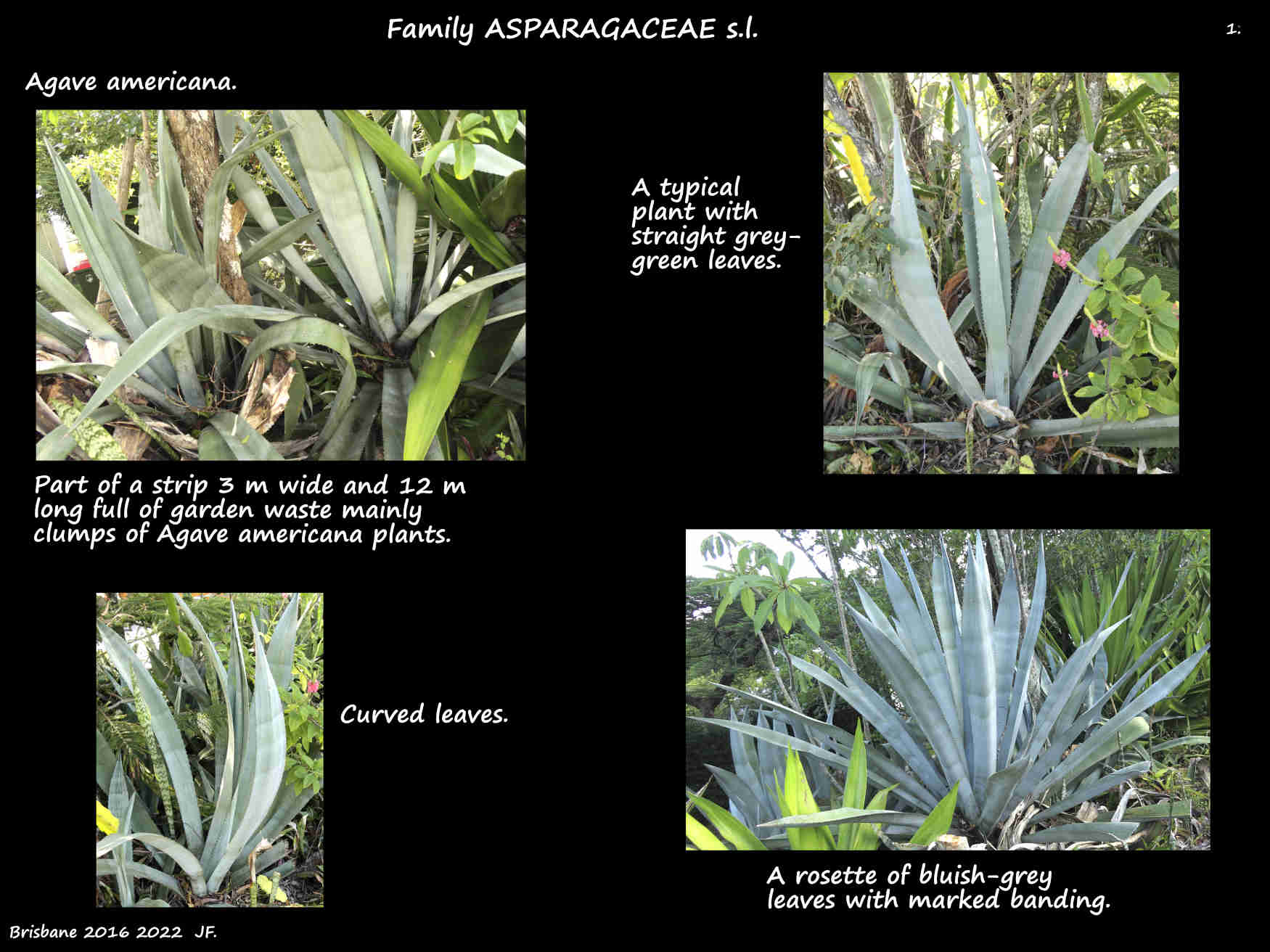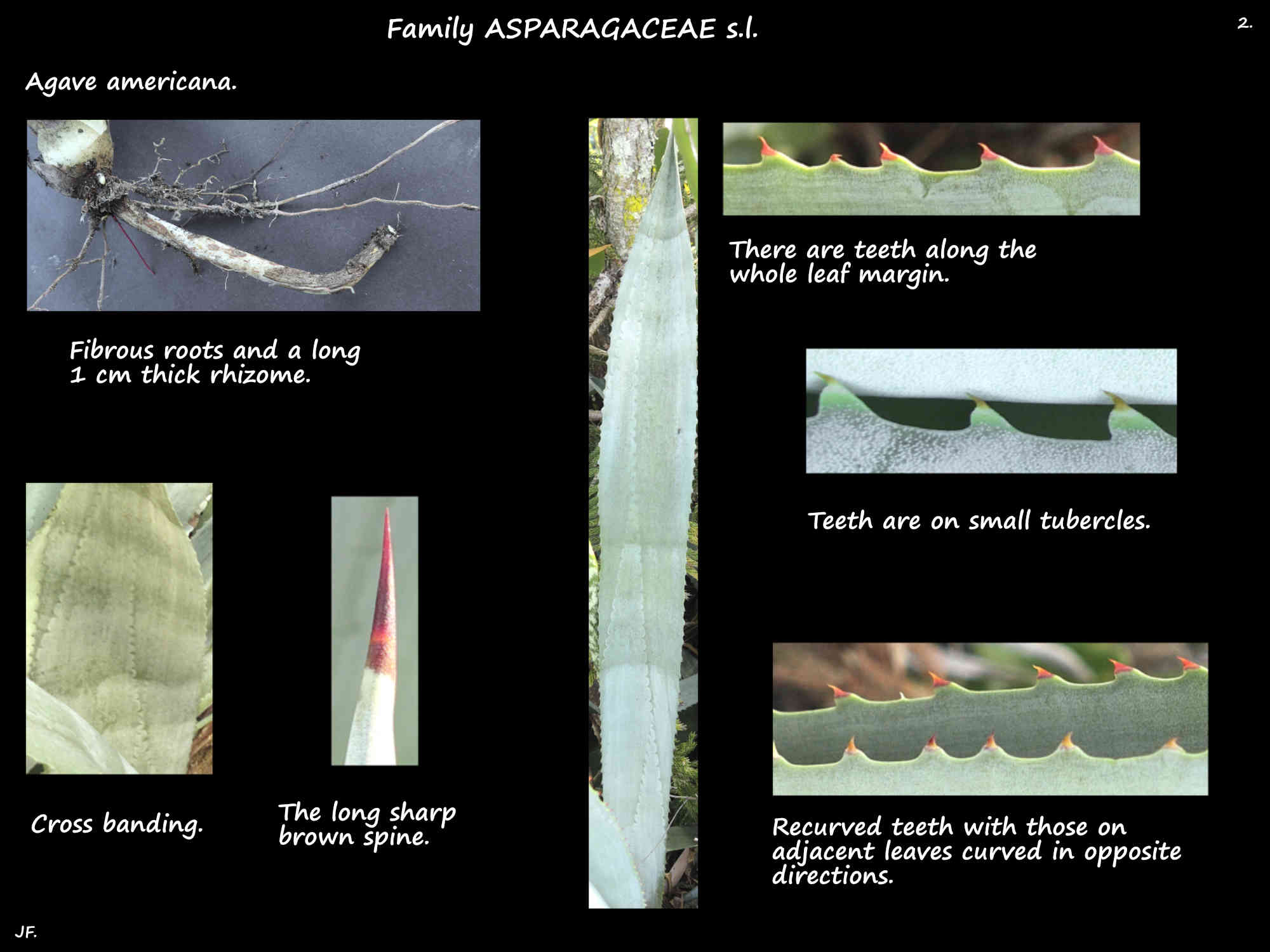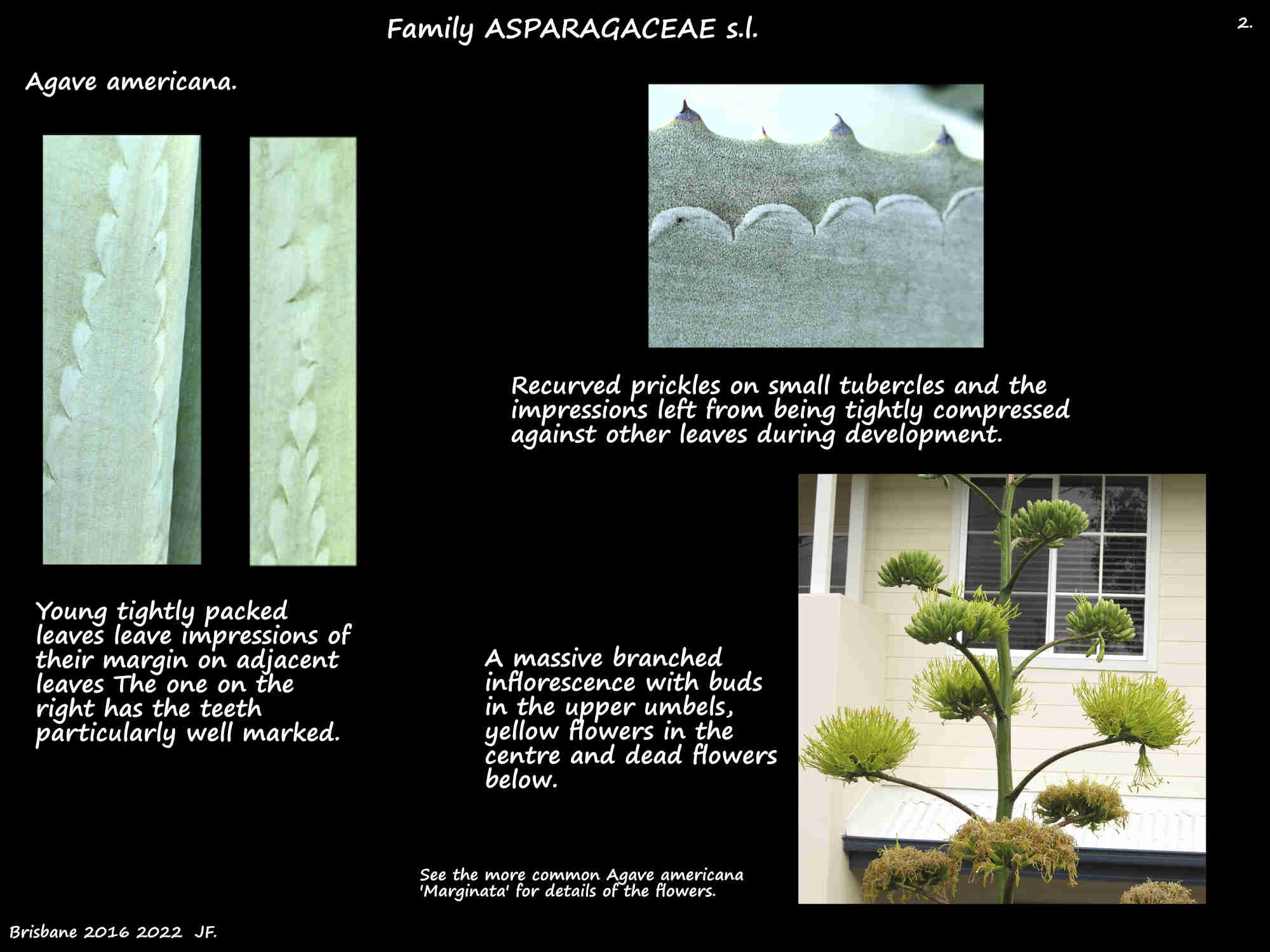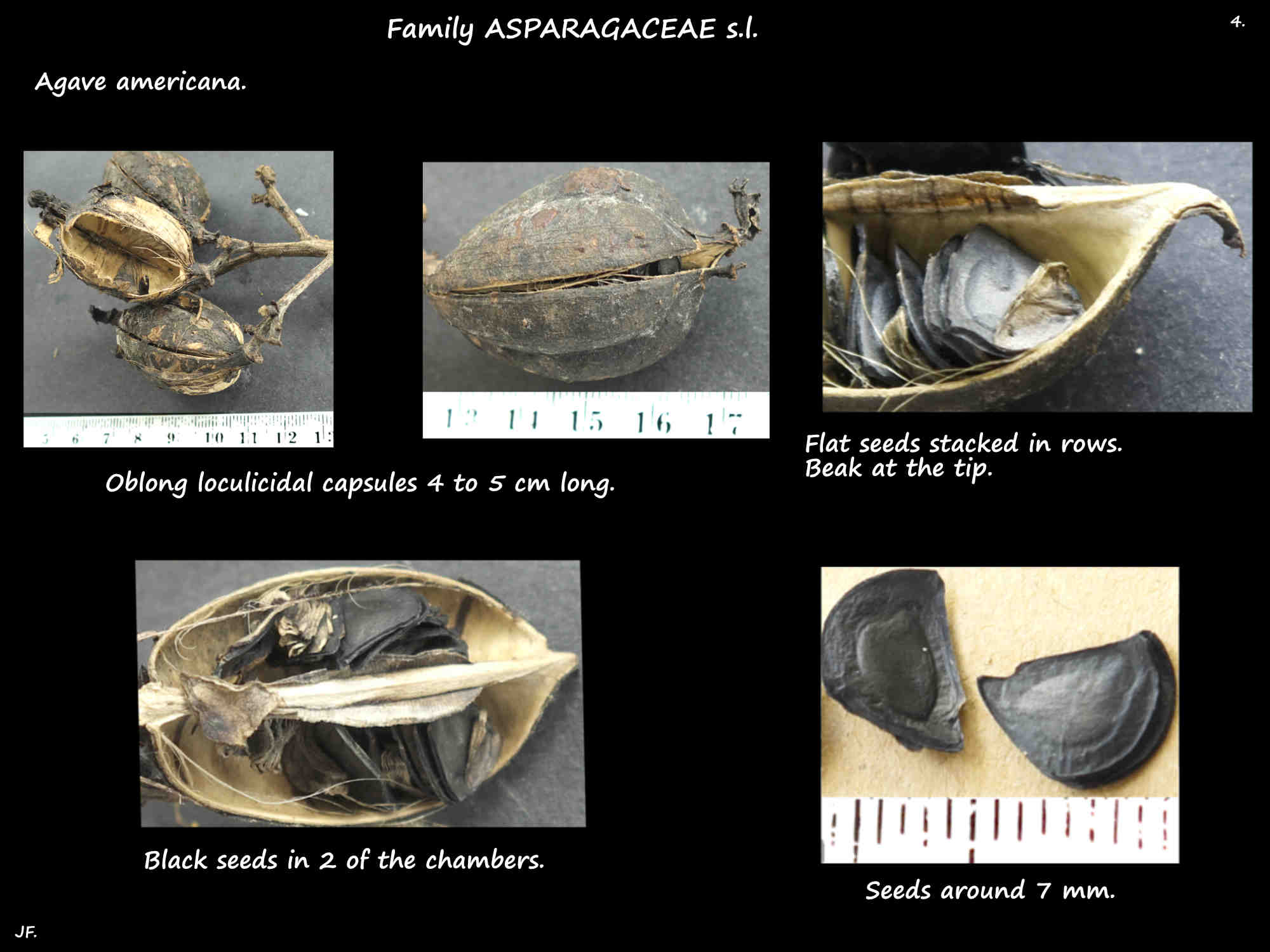Agave americana.
The Century plant is from Mexico and southern USA.
It has been used as a garden ornamental but is now an environmental weed in Queensland.
They can live for up to 30 years then they die after flowering.
It is a very variable species.
Most plants seen have a basal rosette of leaves that hides the very short woody base.
Some older plants develop a visible trunk.
Most plants are around 2 m high and 4 m wide but older ones can be twice as high.
If an inflorescence is cut off early enough the plant continues to grow.
New plants (pups, offsets or suckers) produced from the rhizomes can form large clumps.
The broad lanceolate leaves are up to around 2 m long and 25 cm wide.
The central leaves are erect and the older outer ones are spreading.
Most are straight and rigid but usually some will be bent backwards near the middle or the end.
The blade can be flat or slightly concave like a gutter.
The terminal sharp rigid brown spine, up to 5 or 6 cm long often has a waxy coating.
The whole leaf margin has sharp recurved prickles or teeth over 2 mm and up to 1 cm long.
They are on small tubercles that can be from 2 to 6 cm apart.
Leaves contain a lot of fibre but are still slightly succulent.
The leaf colour is variable with most being a greyish-green with some darker transverse bands.
When the plant is old enough to have accumulated enough resources it produces a massive inflorescence that
can last for 1 to 2 months then the plant dies.
The stout vertical stalk or scape is from 4 to 15 m high.
On the upper part are around 24 (15 – 34) slightly curved branches.
At the end of each side branch are a number of short, close secondary branches each holding a tight cluster
of flowers in an umbel (flowers all attached at the same point).
There are a few leaf-like bracts on the main stalk or peduncle and small ones at each division.
The erect tubular or funnel-shaped flowers are on a 2 to 4 mm long pedicel with a small bracteole at the base.
The pale yellowish or greenish-yellow flowers are 7 to 10 (16) cm long and 2 cm wide at the top.
There are 6 thick tepals with their bases fused for 1 to 2 cm.
The lobes, up to 3.5 cm long are of unequal lengths.
The 6 stamens, up to 10 cm long and inserted onto the tube have long yellow anthers.
The greenish ovary, from 3 fused carpels has a single long style with a 3-lobed stigma.
Flowers mature first as male then after a few days when the pollen is released the stigma becomes receptive
and they are functionally female.
The fruit are oblong loculicidal capsules up to 5 cm long sometimes with a short beak at the end.
Mature brown or black capsules release numerous flattened black seeds about 7 mm long.
Plants can grow from seed but most reproduction is vegetative from the offsets.
They rarely produce bulbils in the inflorescence.
There are varieties with bluish leaves and others variegated in white or yellow plus some cultivars.
J.F.





